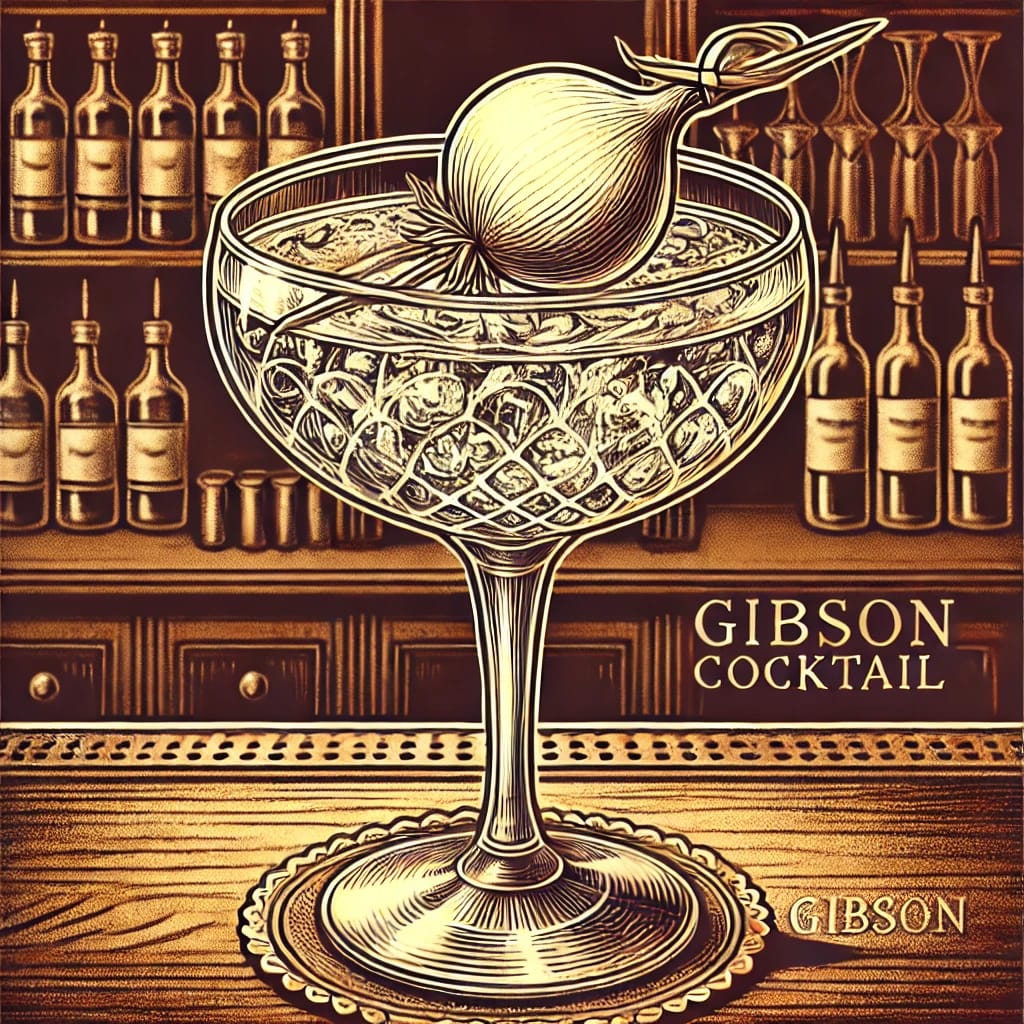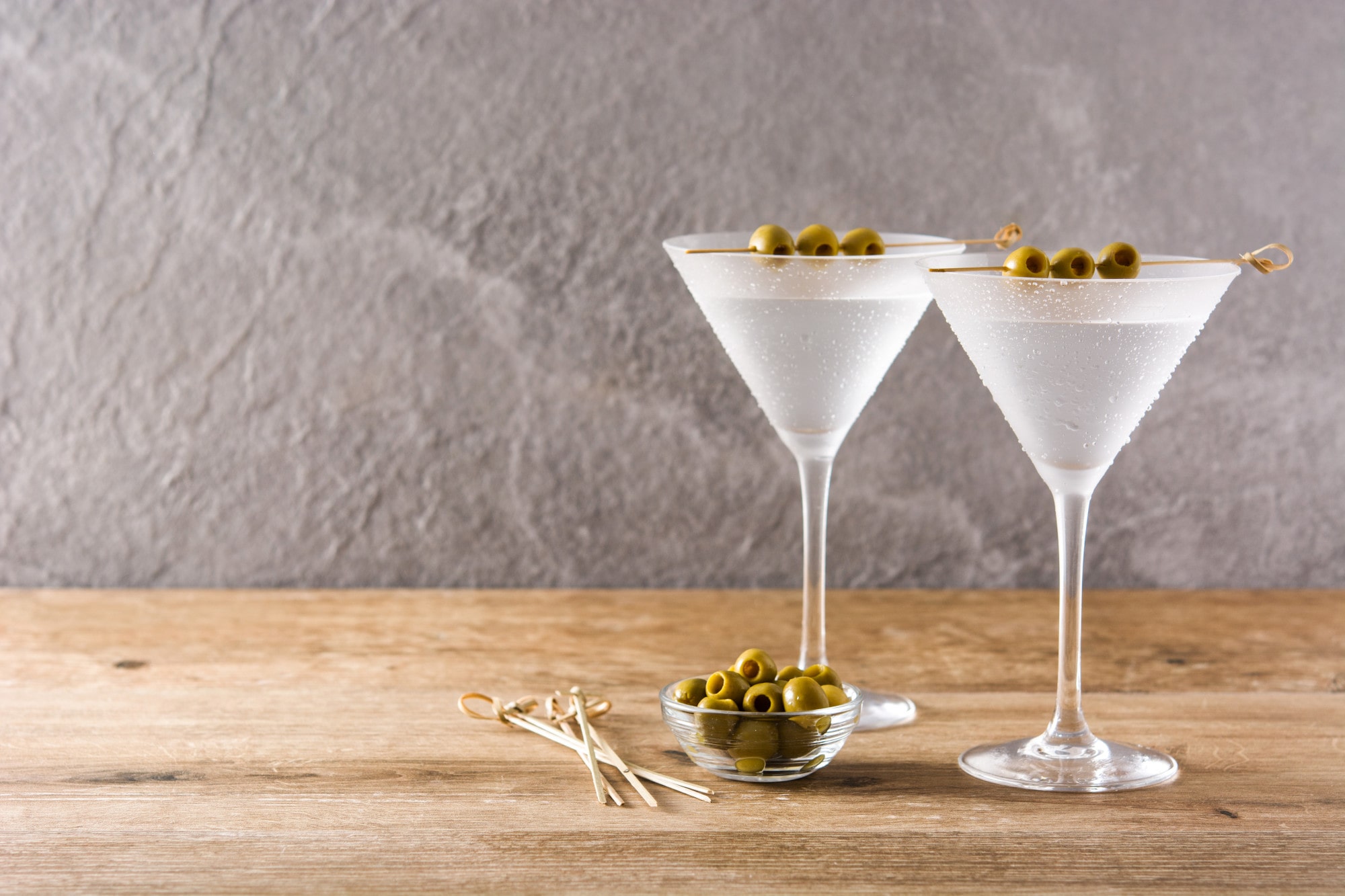The Dry Martini is a timeless cocktail that has stood the test of time. With a rich history and numerous variations, it has become a symbol of elegance in mixology. The olive, beyond being a traditional garnish, plays a crucial role in the Martini’s flavor profile. This article explores its origins, preparation, and the importance of the olive in this legendary drink.
Origins of the Dry Martini
The Dry Martini has captivated generations with its sophistication and refined character. Its origins are intertwined with multiple theories, each contributing to its mystique and widespread appeal.
The Connection to Jerry Thomas
One of the most famous stories credits Jerry Thomas, known as the father of mixology, with the creation of the Dry Martini. His 1862 book, How to Mix Drinks or The Bon-Vivant’s Companion, includes a cocktail resembling the modern Martini.
The Martínez Client Theory
Another popular account tells of a traveler heading to Martínez, California, who requested a special drink. The bartender improvised with available ingredients, crafting a cocktail that delighted the customer who named it the “Martini.”
The Gold Prospector and the Olive
A different tale involves a gold prospector celebrating his success at a bar in Martínez. When champagne was unavailable, the bartender crafted a new cocktail and garnished it with an olive an addition that would prove essential to the drink’s final flavor.
The Martini & Rossi Theory
In 1863, Alessandro Martini and Luigi Rossi founded their renowned vermouth brand, “Martini.” Some believe the Dry Martini was created partly to promote their product, linking the cocktail directly to their premium vermouth.
Vermouth as a Key Influence
The Dry Martini became an icon of mixology, largely due to the reputation of Martini & Rossi’s vermouth. The cocktail’s rise in popularity helped establish their product as the industry standard.
A Cocktail with Many Origins
Rather than a single creator, the Dry Martini is the result of cultural evolution. Over time, various influences and adaptations have shaped its development, leading to its worldwide recognition today.
How to Prepare a Dry Martini
Crafting the perfect Dry Martini is an art that requires precision, high-quality ingredients, and careful execution. Below are the essential components and the correct preparation method.
Essential Ingredients
- Gin or Vodka: The base of a Dry Martini can be either gin (the traditional choice) or vodka. A premium gin is recommended for a balanced, refined flavor.
- Dry Vermouth: A crucial element, typically white French vermouth, complements the spirit, adding depth and complexity.
- Olives: The final touch of the cocktail. Green or black olives are common, and some variations include stuffed olives for a more distinctive taste.
Looking to craft the perfect Martini? At Aceitunas Torrent, we offer the finest green and black olives, with or without pits, and delicious stuffed olives ideal for your cocktail.
Preparation Method
- Uso del vaso mezclador: Mixing Glass Technique: In a mixing glass, combine 5.5 cl of gin or vodka with 1.5 cl of dry vermouth. Precise ratios are key to achieving the optimal flavor balance.
- Chilling the Drink: Fill the mixing glass with ice to chill the mixture without diluting it. Stir gently to maintain the drink’s texture and clarity.
Variations of the Dry Martini
Over time, the Dry Martini has inspired countless variations. Each version offers a unique take on the classic, allowing enthusiasts to explore different nuances.
Dirty Martini
History
The classic Martini, which dates back to the 19th century, was made with gin and dry vermouth. Over time, olives were added as a garnish, possibly as an alternative to lemon peel or maraschino cherry.
Evolution
In the late 19th and early 20th centuries, some bartenders began adding olive brine to soften the alcohol and add an umami kick, giving birth to the Dirty Martini. The brine from preserved olives (or canned olive juice) intensifies the flavor and gives the drink a cloudy tone.
Why is it used?
The olive provides a salty and fatty contrast that balances the bitterness of the vermouth and the dryness of the gin.

Bloody Martini
History
Created in the 1920s and 1930s, this cocktail based on vodka, tomato juice and spices has undergone many variations.
Evolution
Olives began to be used as a garnish along with celery to provide a salty and fatty touch that counteracts the acidity of the tomato. In modern versions, olive brine is added to enhance the umami.
Why is it used?
The olive adds depth of flavor and balances the acidity of the tomato with its saline profile.
Goldfinger Martini
This variation uses Martini Gold vermouth and features Italian black olives as a garnish, adding a sophisticated, visually striking touch.
Olive Oil Martini
History
Inspired by the classic Martini, this modern version became popular in haute cocktails and signature bars.
Evolution
The inclusion of olive oil or olive puree is in response to the search for silkier textures and more pronounced umami notes. Some bartenders prepare it with fat-washing, where olive oil is infused into gin or vodka.
Why is it used?
Olive oil or puree provides a smoother mouthfeel and brings out the nuances of the alcohol.

Perfect Martini
The Perfect Martini balances dry and sweet vermouth in equal parts, creating a smoother, slightly milder alternative ideal as a pre-dinner aperitif.
Gibson Martini
History
Similar to the Martini but with pickled onions instead of olives. It originated in the late 19th century.
Evolution
Although it doesn’t typically contain olives, some bartenders have tried versions with olive puree to add more complexity and a thicker texture.
Why is it used?
In experimental versions, olive puree softens the dryness of the gin and adds a Mediterranean touch.

Mediterranean Negroni
History
Inspired by the classic Negroni (gin, Campari and red vermouth), this cocktail takes Mediterranean influences
Evolution
Some bartenders have begun adding olive puree or canned olive juice to give a saltier note and balance the bitter intensity of Campari.
Why is it used?
The olive complements the herbaceous and bitter flavors of the Negroni, softening the mixture without losing complexity.
Extra Dry Variations
Some purists prefer a drier Martini, reducing or even omitting the vermouth entirely to let the gin or vodka take center stage.
Churchill Martini
A famously extreme take pure gin, with only a glance at the vermouth bottle. This version celebrates the spirit’s essence with no distractions.
The Importance of the Olive
The olive is more than just a garnish it plays a key role in enhancing the Dry Martini’s character.
Types of olives used
There are several varieties of olives that can be used in the preparation of the Dry Martini, each one contributing unique characteristics to the cocktail.
Green vs. Black Olives
Green olives are the traditional choice, offering a mild, herbal taste that complements gin or vodka. Black olives provide a richer, saltier profile, introducing deeper flavor contrasts.
Stuffed Olives
Stuffed olives (e.g., with anchovies) add another layer of complexity, altering the Martini’s balance while elevating its presentation.
How Many Olives?
The amount of olives used can vary depending on the preference of the person making the drink, allowing the drink to be further personalized.
Classic Tradition: One olive on a cocktail pick.
Roosevelt Martini: Features two or three olives, allowing the drinker to savor the interplay between sips.
Why are olives and their derivatives added to cocktails?
Balance of flavors
The olive provides a salty and umami touch, which balances cocktails with strong alcoholic, sweet or acidic notes.
Texture
In the case of olive puree or olive oil, a silkier texture in the mouth is sought.
Mediterranean influence
In contemporary mixology, Mediterranean ingredients (olives, olive oil, herbs) have gained prominence to add sophistication.
Appearance and presentation
The olive garnish is a visually appealing element that has been a symbol of elegance since the golden age of cocktails.
In short, olives and their derivatives have evolved in cocktails from simple garnishes to key ingredients in the search for new flavor profiles.
The Dry Martini in Culture
The Dry Martini is more than a cocktail it is a cultural icon. Its presence in art, cinema, and literature reinforces its symbolism of sophistication and exclusivity.
A Symbol of Elegance
Historically associated with the elite, the Martini embodies refinement. Its meticulous preparation and presentation have made it a staple at high-profile events, exuding an air of exclusivity.
A Cinematic and Literary Icon
The Dry Martini has left an indelible mark on film, famously linked to James Bond and his iconic phrase, “Shaken, not stirred.” This association cements the Martini’s image as a drink of mystery and class.
In literature, it represents hedonism and modernity, frequently appearing in novels depicting high society lifestyles. Writers and poets have immortalized the cocktail, enhancing its reputation as a timeless cultural element.
The Dry Martini is more than just a drink it’s a legacy. And while it remains a cinematic staple, Aceitunas Torrent is an essential part of your home bar.
Finally, we would like to thank the Department of Hospitality and Tourism of IES Gran Capitán for their participation in this post.









